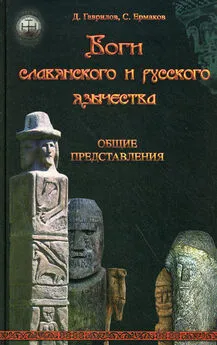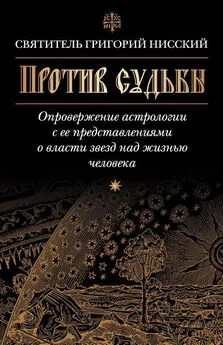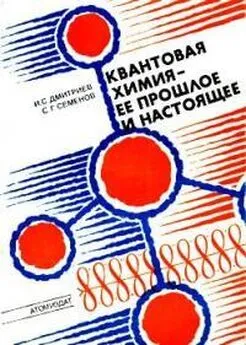Дмитрий Старостин - Между Средиземноморьем и варварским пограничьем [Генезис и трансформация представлений о власти в королевстве франков]
- Название:Между Средиземноморьем и варварским пограничьем [Генезис и трансформация представлений о власти в королевстве франков]
- Автор:
- Жанр:
- Издательство:Центр гуманитарных инициатив
- Год:2017
- Город:СПб.
- ISBN:978-5-98712-771-1
- Рейтинг:
- Избранное:Добавить в избранное
-
Отзывы:
-
Ваша оценка:
Дмитрий Старостин - Между Средиземноморьем и варварским пограничьем [Генезис и трансформация представлений о власти в королевстве франков] краткое содержание
Книга адресована историкам-медиевистам и широкому кругу читателей.
Между Средиземноморьем и варварским пограничьем [Генезис и трансформация представлений о власти в королевстве франков] - читать онлайн бесплатно полную версию (весь текст целиком)
Интервал:
Закладка:
Chapter one addresses the formation of the kindom of the Franks and undertakes to examine the events of Clovis’ coming to power, of his baptism and of the delineation of the boundaries within the family between the winning and the losing lines. Constructing the story of the Franks’ forceful conquest of Soisson and of Northern Gaul in general, which goes against the archaeological evidence and information from other sources, Gregory of Tours, as this study suggests, followed his own goal of presenting the Franks as the group whose legitimacy in excercising power did not depend on the Roman empire’s sanction. His description of Clovis’ visit to Tours showed the bishop attempting to portray the king as the duly chosen lieutenant of the Byzantine emperor, but the one whose prerogatives were transferred to him not by the emperor’s legates but the bishop of Tours. Thus he saw the Frankish kings as both belonging to the Mediterranean world and distinct from it, as being part of the imperial aristocracy and elite, and at the same time as conquerors who owed their authority to no one. The chapter also suggests that Gregory of Tours made his choice of supporting the Austrasian brach of the dynasty in the person of Childebert over the Soisson branch, represented by Chilperic. This choice was due to the attempt of Chilperic as the king of Neustria to claim control of Tours to himself, whereas Childebert as the more distant ruler did not arise the same suspicions and negative attitude. This predilection towards who he thought was the “better” king he thought should transform into historical reality. But Gregory of Tours’ representation was far from being a true representation of historical trends as the branch of Childebert lost in the long run and that of Chilperic managed to become the main one and to produce all remaining kings of the Merovingians. Thus the bishop of Tours’ highly subjective approach highlighted the episcopal privilege and put to the fore the king who recognized it, while the historical situation rapidly developed towards favoring the branch that the prelate saw as ill-fitted and doomed. While Gregory espoused the idealized picture of the kingdom as an heir to the Roman diocese where the bishops and cities were key to power structures, while the situation rapidly developed towards the kings appropriating the powers of imperial representatives that had earlier been reserved for general like Aegidius. Gregory underappreciated the capability for maneuver that the youngest son of Chlotar I from his last marriage could muster and generally failed to grasp the attempts of the weakest king in the family hierarchy to aspire to the position of an educated philosopher-king and intermediary. But in Fredegar’s Chronicle the accents changed as the author sought to emphasize continuity between the Frankish kings and the Roman empire, whose generals their predecessors could have served as soldiers. In the “Liber historiae francorum” the representation of the Frankish kingdom came to resemble the straight line from the barbarian military commanders of the fifth century to the Christian kingdom of the seventh and eighth centuries. Thus one may notice that the representation of the Frankish kingdom changed significantly, from being that of the episcopal republic under the aegis of the good kings and in constant competition with the unruly representatives of the Merovingian family, to the kingdom that incorporated in its unity with the dynasty the ideal of Christian authority.
Chapter two shows how the development of monasticism in the seventh century contributed to the changes in the patterns of literacy as many educated people began to shift their writing habits to hagiography. It investigates the ways in which sacrality, originating from monastic community, was added to the image of the king which had been hitherto perceived as the intermediary between the Mediterranean post-Roman world and the world of barbarian limes. This chapter suggests that these sources produce a picture one needs to take into account with caution. On the one hand, the wide spread of saints’ lives produced an impression of the monastic communities’ privileged position since the very first day of monastic onslaught. Careful examination suggests, however, that for a relatively long period the rising number of monasteries had not initiated the reshaping of the foundations of the royal authority. Using the example of St-Denis, this chapter suggests that the monastery’s history shows it to be a regular monastic establishment which had not yet developed a unique tie with the Frankish kings it did later. Much as with the Gregory of Tours’ Histories, hagiography produced an impression of the close ties between the kingship and monasticism from the early seventh century, whereas in reality the kings long continued to be ignorant of the opportunities the new phenomenon provided. Thus in the lives of the seventh and early eight centuries nothing had changed with the coming of the monasteries as the kings remained largely out of contact for the monks. This chapter suggests that the Merovingian kingship continued to be built in this age on the close connection the cities that had been important until the trends first noticed by Henri Pirenne started to weigh heavily on their existence. Thus the imagined historical picture needs to be separated from the actual history of the Merovingian kingship in the case of hagiography just as it has been done in the first chapter in the case of narrative histories.
Chapter three addresses records of court proceedings that had become a peculiarly interesting sort of documents since the middle of the seventh century and that filled an important gap that appeared when both narrative histories and hagiography stopped appearing as a result of the overall drop in literacy. These records were an offshoot of the imperial rescript and they conveyed to the conflicting parties the solutions found by the kings’ representatives and the king himself to the conflicts that had no precedent in Late Antique law. These court proceedings dealt with reshaping of the power balance in Neustria and they showed how different aristocratic groupings used appeals to the king to get a grip on those lands that lost their direct owners and that fell through the cracks of the Frankish and Gallo-Roman networks of authority. Although scholars have thought that these court proceeding, mostly favoring the monastery St-Denis, were “political” in the sense of favorite the key royal monastery, I suggest that even the most evident of them still showed that the merovingian court in the late period of the dynasty’s rule was the place of negotiation and incorporation of elites into the orbit of royal prestige. These documents suggest contrary to the image of the “weak rulers” the kings in this period were deemed to be peacemakers and rulers in the image of the emperor and that they were accorded the right to pronounce law. This prerogative, although derided by Einhard in the 830-s, meant a significant rise in prestige of the verovingian kings who had finally managed to move away from the military commander status and who added to their aristocratic standing (unstable and questioned by Gregory of Tours) the right to be considered worthy of law-giving, the status first accorded to Theodosius II by the Senate in 439.

Примечания
1
Тьерри считал, что в VI в. (т.е. в период, описываемый Григорием Турским) франкские короли хоть и относились со все возраставшим уважением к католическому епископату, но оставались по сути варварами и «язычниками». Взгляды Тьерри во многом развил и повторил один из представителей «малогерманской» партии. См.: Sybel H. von Entstehung des deutschen Kônigthums. Frankfurt am Main, 1881. В этой работе, выполненной в рамках концепции, заложенной Тьерри, отрицалось наличие какой-либо государственности у германцев. Отчасти противоположная точка зрения принадлежала Ф. Гизо: Guizot F. Récits historiques. Bielefeld, 1897. Ее отличие от взгляда Тьерри состояло в том, что он придавал большее значение цивилизаторской функции галло-римского епископата, и считал, что благодаря ему Хлодвиг и последующие меровингские короли стали заимствовать римскую культуру, пытаясь имитировать римские образцы в области представлений о власти.
2
Результатом стало появление в школьных учебниках всех стран карт, на которых стрелами были отмечены основные направления «военных кампаний» варваров.
3
Его точка зрения традиционно называется «романистской», хотя сам ученый отвергал такое определение собственных взглядов.
4
Но наиболее концентрированным (и в чем-то даже гипертрофированным) выражением этого тезиса явилась книга А. Пиренна: Pirenne H. Mahomet et Charlemagne. 2-е изд. Р., 1937. Необходимо отметить, что данная работа, сохранившаяся в виде черновиков, не была завершена автором при его жизни. Труд увидел свет благодаря усилиям одного из учеников, причем в процессе правки в текст вошли не только мысли и идеи, сформулированные Анри Пиренном в письменном виде, но и суждения, которые, как утверждал его ученик, произносились ученым устно в ходе личных бесед. В монографии показано, что приход варваров на территорию римской Галлии и Аквитании нисколько не изменил социально-экономическую ситуацию в том регионе, которая как была, так и осталась связана с Поздней Античностью по своему характеру.
5
Первопроходцем в этой области и создателем очень влиятельной историографической традиции (и школы) во Франции был Жорж Дюби, который постарался обосновать тезис Марка Блока на примере историко-правового исследования практики зависимости воинов от магнатов. См.: Duby G. Recherches sur l’évolution des institutions judicaires pendant le X et XI siècle dans le sud de la Bourgogne 1 // Le Moyen Âge. 1946. T. 52. № 2–4; Idem. Recherches sur l’évolution des institutions judicaires pendant le X et XI siecle dans le sud de la Bourgogne 2 // Le Moyen Âge. 1947. T. 53. № 1–2. Основным его трудом, эталоном для всех его последователей, стал: Idem. La société aux XI et XII siècles dans la région Mâconnaise. R, 1953.
Читать дальшеИнтервал:
Закладка:
![Обложка книги Дмитрий Старостин - Между Средиземноморьем и варварским пограничьем [Генезис и трансформация представлений о власти в королевстве франков]](/books/1100074/dmitrij-starostin-mezhdu-sredizemnomorem-i-varvars.webp)






![Марк Блок - Короли-чудотворцы [очерк представлений о сверхъестественном характере королевской власти, распространённых преимущественно во Франции и в Англии]](/books/1088174/mark-blok-koroli.webp)

